 |

Tools:








Keep Children Safe From FireUSFA, FEMA and Others Urge Prevention
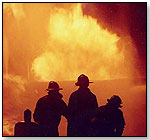 Children under age 5 are twice as likely as the rest of us to die in a fire. Each year, thousands of children are injured or killed in home fires, and 40 percent of them are under age five. To help protect babies and toddlers from the devastating effects of fire, the United States Fire Administration (USFA), a division of the Federal Emergency Management Agency (FEMA), has begun a national public safety campaign. USFA is working with the American Academy of Pediatrics, NFPA, National SAFE KIDS Campaign and ZERO TO THREE to deliver this important message to parents and those who care for children under age 5: Children under age 5 are twice as likely as the rest of us to die in a fire. Each year, thousands of children are injured or killed in home fires, and 40 percent of them are under age five. To help protect babies and toddlers from the devastating effects of fire, the United States Fire Administration (USFA), a division of the Federal Emergency Management Agency (FEMA), has begun a national public safety campaign. USFA is working with the American Academy of Pediatrics, NFPA, National SAFE KIDS Campaign and ZERO TO THREE to deliver this important message to parents and those who care for children under age 5:
PREPARE — make your home safer from fire.
PRACTICE fire safety — especially your home fire escape plan.
PREVENT THE UNTHINKABLE — When it comes to your family’s smallest members, remember: Love alone won’t save them. Practicing fire safety will.
CHILDREN AND FIRE
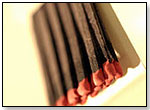 FACT: Matches, lighters and other heat sources are the leading causes of fire-related deaths for children under age 5. In fact, toddlers actually cause a large number of home fires by playing with lighters and matches. Children have a natural curiosity about fire and you can’t underestimate their ability to strike matches or start a lighter. FACT: Matches, lighters and other heat sources are the leading causes of fire-related deaths for children under age 5. In fact, toddlers actually cause a large number of home fires by playing with lighters and matches. Children have a natural curiosity about fire and you can’t underestimate their ability to strike matches or start a lighter.
WHAT YOU CAN DO
• Store matches and lighters out of children’s reach and sight, preferably in a locked cabinet.
• Teach toddlers to tell you when they find a match or a lighter.
• Remember that even child-resistant lighters are not childproof, and store them safely.
• When a child is curious about fire or has been playing with fire, calmly and firmly explain that matches and lighters are tools for adults to use carefully.
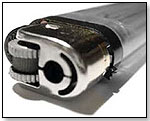 • Never use matches or lighters as amusement. Children may imitate you. • Never use matches or lighters as amusement. Children may imitate you.
• Prevent fires by practicing and teaching fire-safe behaviors in your home. Keep children 3 feet away from the stove when cooking, don’t overload outlets, have your heating systems checked annually and use deep ashtrays and soak the ashes in water, if you smoke.
SMOKE ALARMS
FACT: Two-thirds of home fires that kill children occur in homes without a working smoke alarm. When fire breaks out, you have only seconds to escape its heat, black smoke and deadly gases. Families can dramatically increase the chances of surviving a fire simply by installing and maintaining working smoke alarms. Most hardware, home supply, or general merchandise stores sell smoke alarms and their batteries. Some local fire departments offer smoke alarms at little or no cost.
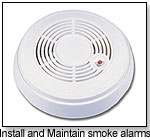 FIRE SAFETY FOR BABIES AND TODDLERS FIRE SAFETY FOR BABIES AND TODDLERS
What you can do:
• Install and maintain smoke alarms on every level of your home and outside sleeping areas.
• Test your smoke alarms monthly and replace the batteries at least once a year.
• If you keep the door of your baby’s bedroom closed, keep a working smoke alarm in the room and use a baby monitor so you can hear if the alarm sounds.
• When your children are ready, familiarize them with the sound of the smoke alarm. Teach them that when one goes off, they must leave the home and go outside to the designated family meeting spot.
HOME FIRE ESCAPE PLANS
FACT: Most of the families who have fire escape plans do not practice them. Consider that it takes just a few minutes, sometimes only seconds, for a fire to spread out of control. Then consider the difference that a well-rehearsed fire escape plan can make. Children as young as 3 can follow a fire escape plan that they have practiced often, and it can mean the difference between life and death.
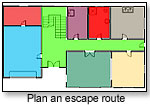 What you can do: What you can do:
• Draw a basic diagram of your home, marking all windows and doors, and plan two routes out of each room.
• Consider various fire scenarios, from easiest to most difficult. Imagine a fire starting and spreading from your kitchen, from the basement, and from the hallway outside your bedroom. Develop your escape plan with options for a safe escape in each scenario.
• If you are escaping smoke, crawl low under the smoke. Touch doors to see if they are hot before opening. If so, use the alternative escape route.
• Designate a safe meeting point outdoors and teach your children never to go back inside the house.
• Practice your fire escape plans regularly — at least twice a year, more often is better.
• Include a strategy for times when one parent is out of the home.
• When practicing the fire escape plan, show each child how to cover his or her nose and mouth to reduce smoke inhalation.
• Keep exits clear of debris or toys.
When you have babies and toddlers in the home, these extra escape options are necessary:
• Keep a baby harness by the crib in case of emergencies. The harness, worn like a body brace, allows you to comfortably carry your baby and leave your hands free to escape the home.
• Keep your child’s bedroom door closed. If a hallway fire occurs, a closed door will hinder smoke from overpowering your baby or toddler, giving firefighters extra time for rescue.
• Teach toddlers not to hide from firefighters. Uniforms can be scary in times of crisis. Teach children that firefighters are there to help in an emergency.
• If you have older children too, have them practice crawling, touching doors, or going
to the window, according to your escape plan.
THIS BANNER IS AN AD:

• • • • • • • • • • • • • • • • • • • • • • • • • • | • • • • • • • • • • • • • • • • • • • • • • • • • |
Back to TDmonthly's front page
|  |
Advertise on TDmonthly

|

